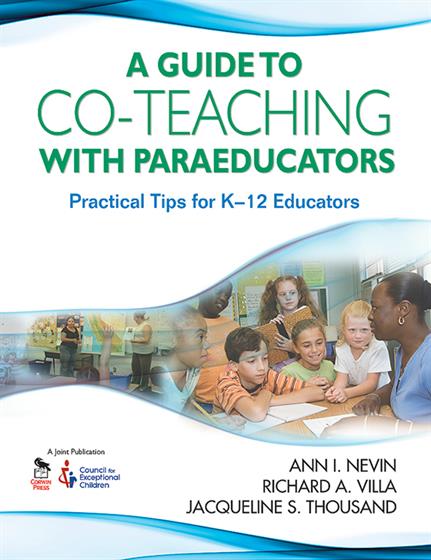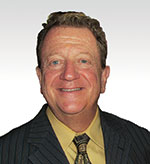List of Tables and Figures
Acknowledgments
About the Authors
Introduction
1. Why Paraeducators? What Experience, History, Law, and Research Say!
Questions
What Are Paraeducators?
When Did Paraeducators First Become a Part of the American Classroom?
Meet Paraeducators: Ms. O. and Ms. Begay
What Does the Research Say About Paraeducators?
What Are the Current Legislative Mandates Regarding Paraeducators?
What Are the Potential Legal Challenges?
2. Meet the Teams
Questions
Meet Ms. Hernandez: The Elementary School Paraeducator and Her Team
Meet Ms. Bartolo: The Middle School Paraeducator and Her Team
Meet Mr. Anderson: The Secondary School Paraeducator and His Team
3. Refining Roles and Responsibilities of Paraeducators
Questions
What Are the Variety of Roles and Responsibilities That Paraeducators Take On When They Work in Inclusive Classrooms?
What Are the Different Roles and Responsibilities for Others, Such as Classroom Teachers, When They Work With Paraeducators in Inclusive Classrooms?
What Is the Paraeducator's Role in the Instructional Cycle?
Gathering Information About Student Characteristics
Addressing Mismatches Between Student Characteristics and Classroom Demands
Ms. Hernandez: Elementary Paraeducator Roles and Responsibilities
Ms. Bartolo: Middle School Paraeducator Roles and Responsibilities
Mr. Anderson: Secondary School Paraeducator Roles and Responsibilities
Summary
4. Collaborative Processes: Tips and Strategies
Questions
Why Is the Collaborative Planning Process So Important?
What Are the Strategies to Make Planning Processes More Efficient?
What Are the Tips for Developing Interpersonal Relationships Among Team Members?
How Are Effective Planning Teams Assessed?
Ms. Hernandez: Elementary Collaborative Planning Scenario
Ms. Bartolo: Middle Level Collaborative Planning Scenario
Mr. Anderson: Secondary School Collaborative Planning Scenario
5. Co-Teaching and Collaborative Approaches
Questions
Who Can Be Co-Teachers?
What Are the Four Approaches to Co-Teaching That Paraeducators Are Most Likely to Experience When They Help Students in the General Education Classroom?
Supportive Co-Teachers
Parallel Co-Teachers
Complementary Co-Teachers
Team Teachers
How Can Paraeducators Be Co-Teachers?
In What Ways Does a Co-Teaching Lesson Plan Format Help to Guide Instruction?
Ms. Hernandez: Elementary Team Co-Teaching and Collaborative Approaches
Supportive, Parallel, and Complementary Co-Teaching in Second-Grade Homeroom Language Arts Time
Supportive, Parallel, and Complementary Co-Teaching in Third-Grade Homeroom Math Time
Ms. Bartolo: Middle School Co-Teaching and Collaborative Planning
Supportive, Parallel, and Complementary Co-Teaching in English Classes
Supportive and Complementary Co-Teaching in Science Class
Parallel Co-Teaching in the Learning Center
Mr. Anderson: Secondary Team Co-Teaching and Collaborative Planning
Adjusting Co-Teaching to Support Student Needs
Supportive and Parallel Co-Teaching in Social Studies
Summary
6. Systems Supports for Paraeducators' Success: Professional Development, Supervision, and Logistical Supports
Questions
What Professional Development Do Paraeducators Need and What Are the Skills Required for Paraeducators?
What Are the Approaches to Professional Development for Paraeducators?
What the Law Requires
What a Job Analysis Suggests
What Standards of Professional Organizations Suggest
What Should Paraeducators Expect From Teachers in Terms of Supervision and Coaching?
On-the-Job Training
Formal Professional Development
What Are Dimensions of Effective Supervision for Paraeducators?
What Supervision Is and Is Not
Melding Supervision and Professional Development: A Cyclical Model
What Are Logistical Supports? What Logistical Supports Help Paraeducators to Be Welcomed and Supported in Their Jobs?
Ms. Hernandez: Elementary Example of Professionl Development, Supervision, and Logistical Support
Ms. Bartolo: Middle School Paraeducator Example of Professional Development, Supervision, and Logistical Support
Mr. Anderson: Secondary School Paraeducator Example of Professional Development, Supervision, and Logistical Support
Summary and Your Next Steps
7. Paraeducator: Collaborative Members of Inclusive Teams
Questions
Advice From Paraeducators in Co-Taught Classrooms
What Opinions and Advice Do Paraeducators Offer?
Ms. Sheila's Experience
Ms. Andrea's Experience
A National Study of Paraeducators in Inclusive Classrooms
Common Issues of Paraeducators in Inclusive Classrooms
Roles of Paraeducators in Inclusive Classrooms
Advice Paraeducators Offer
Advice From Paraeducator Scenarios
Ms. Hernandez: Elementary Scenario
Ms. Bartolo: Middle School Scenario
Mr. Anderson: Secondary School Scenario
Summary
Resources
A: Co-Teaching Roles and Responsibilities Matrix
B: Gathering Information About Learners and Classroom Demands Template
C: Checklist of Supplementary Supports, Aids, and Services
D: Likes & Dislikes Team Summary
E: Planning Meeting Agenda
F: Are We Really a Collaborative Team?
G: SODAS
H: Lesson Plan Template
I: Professional Development Opportunities and Informative Web Sites
Glossary
References
Index




